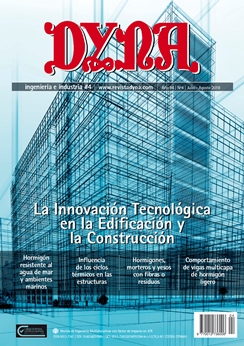COMPARISON OF INFLUENCE OF THERMAL CYCLES ON THERMO-ACTIVATED STRUCTURES WITH RESPECT TO PREDICTED MODELS ESTABLISHED IN THE MODEL CODE 2010
Keywords:
Plain concrete, temperature-related & thermal effects, testing, thermo-active structures, Hormigón liso, efectos térmicos y relacionados con la temperatura, ensayos, termoactivosAbstract
Global warming and increasing CO2 emissions make it necessary to reduce energy consumption while maintaining thermal comfort. The current trend advocates the combination of energy conservation strategies and energy efficiency technologies and therefore thermoactive structures play an important role. The Model Code 2010 establishes a model of the effect of temperature on the compressive, flexural and tensile strength for normal concretes, but this model only takes into account the effect of temperature, thus neglecting the age of the concrete, as well as the effect produced by thermal cycles over time. This article examines the behaviour of concrete subjected to thermal cycles, thus imitating the process of thermal loading and unloading in thermoactivated structures throughout its period of use. Cylindrical specimens have been made to study compression behaviour and tensile strength, and prismatic specimens have been made to determine flexural strength. The results obtained have been compared with the models established in the 2010 model code, and large differences can be observed between them. It can be concluded that the models established in the model code do not describe the behaviour of the concrete subjected to thermal cycles. Keywords: Plain concrete, temperature-related & thermal effects, testing, thermoactiveDownloads
Published
2019-07-01
Issue
Section
ARTICULOS

